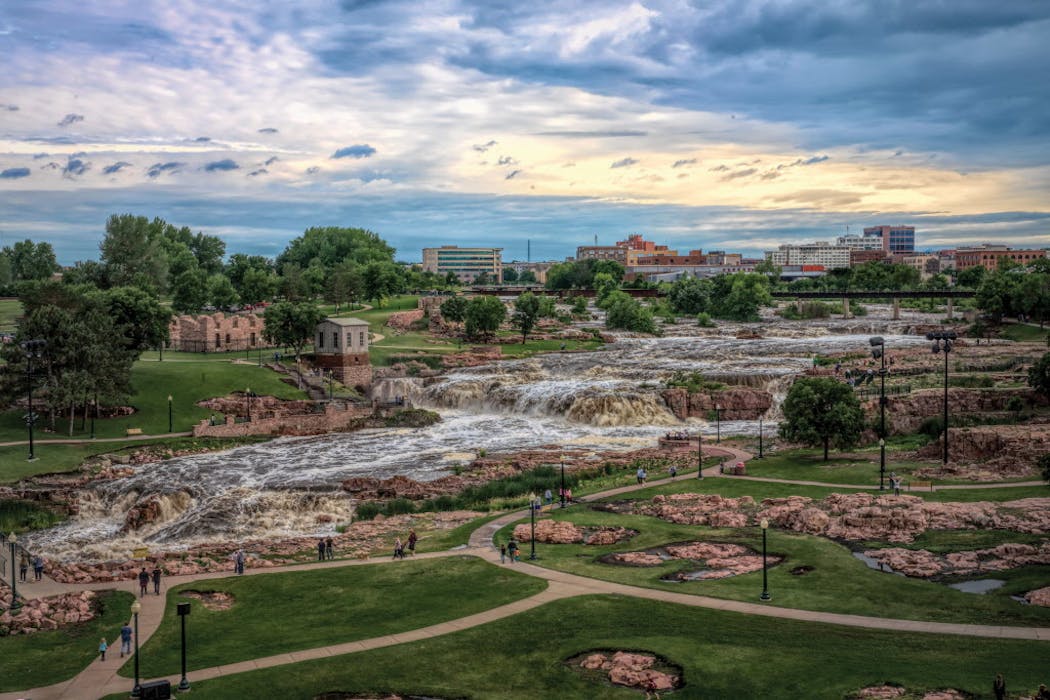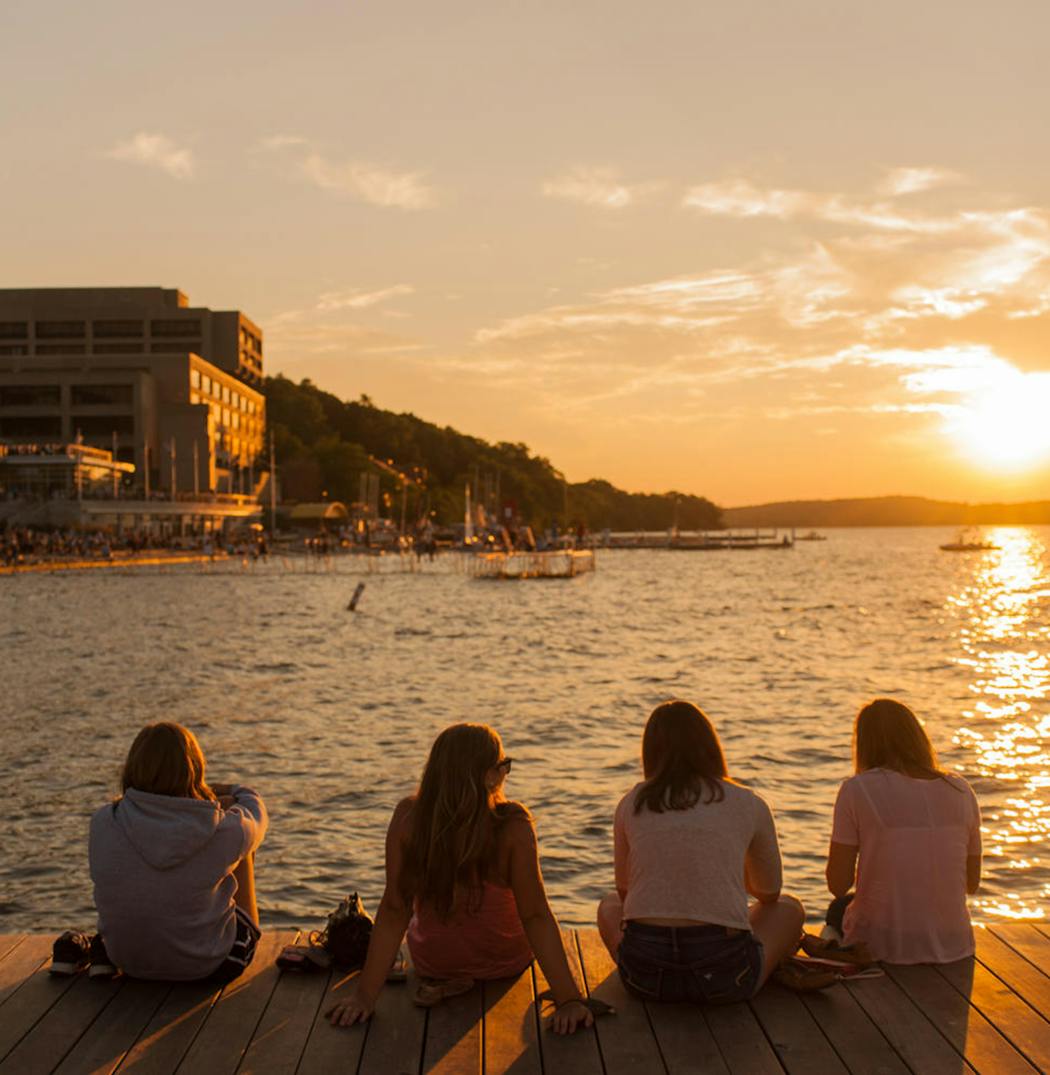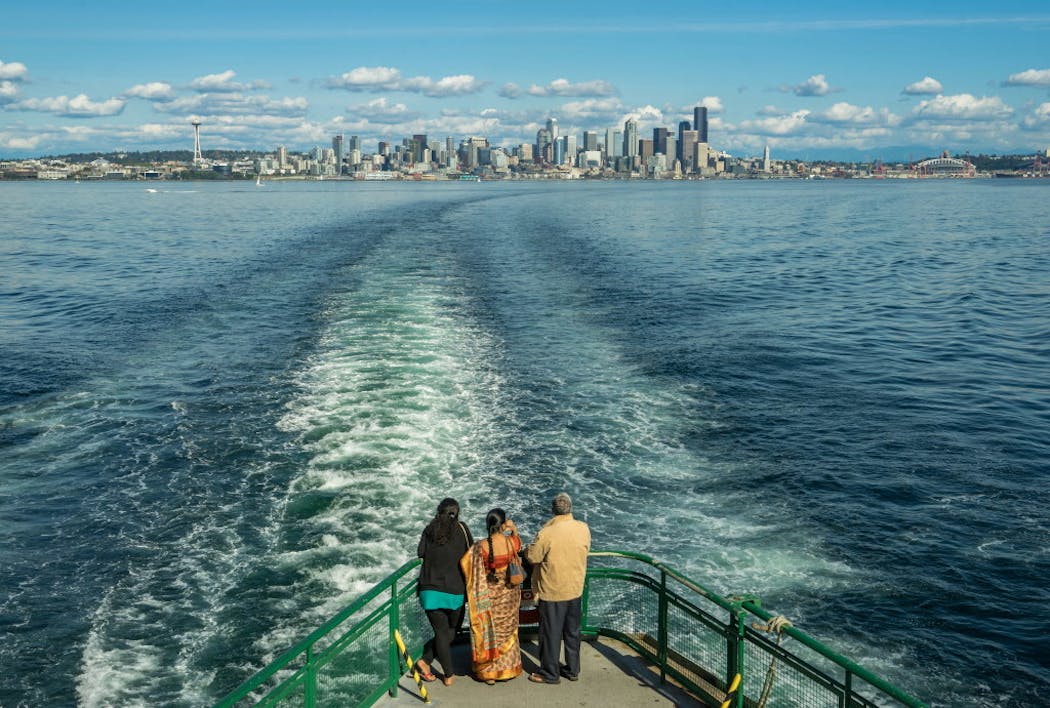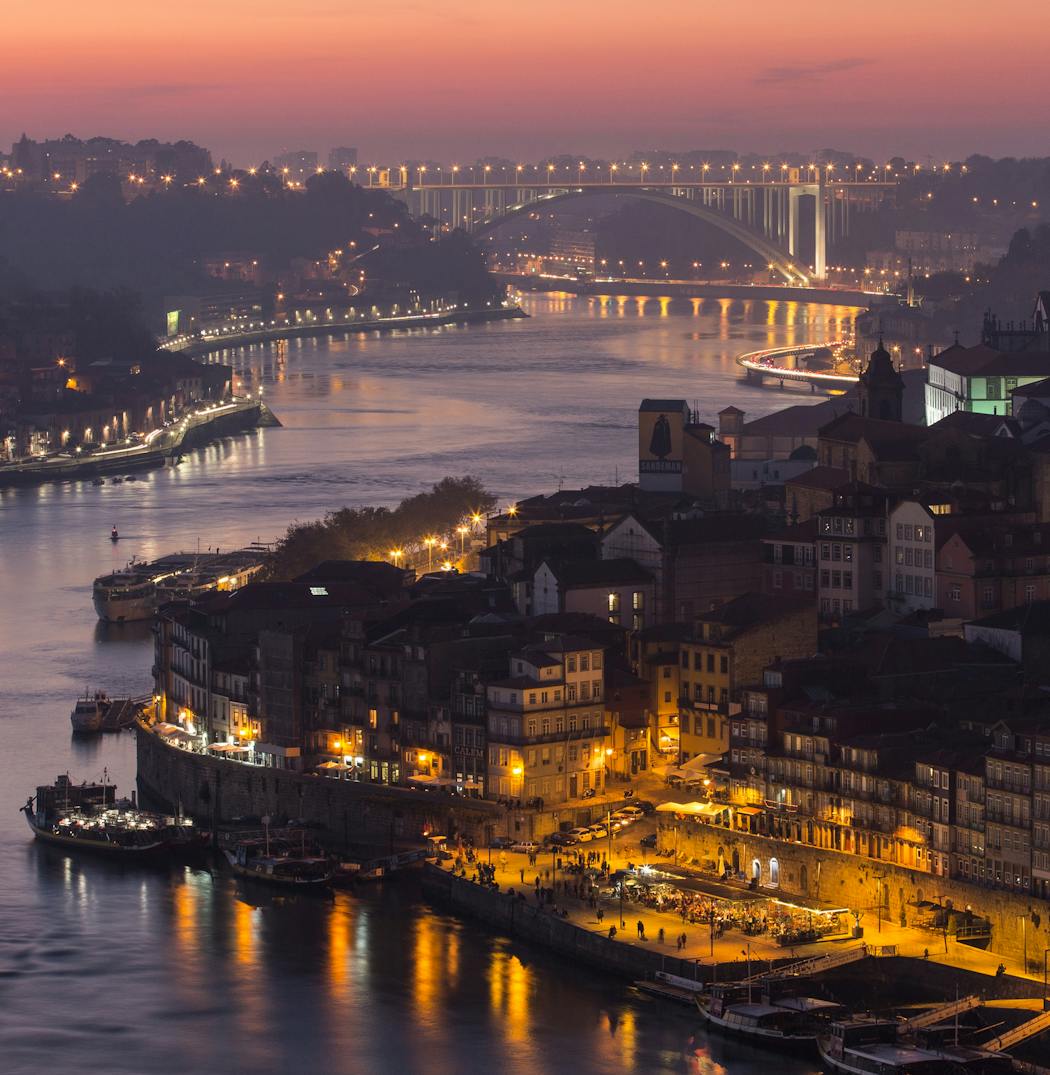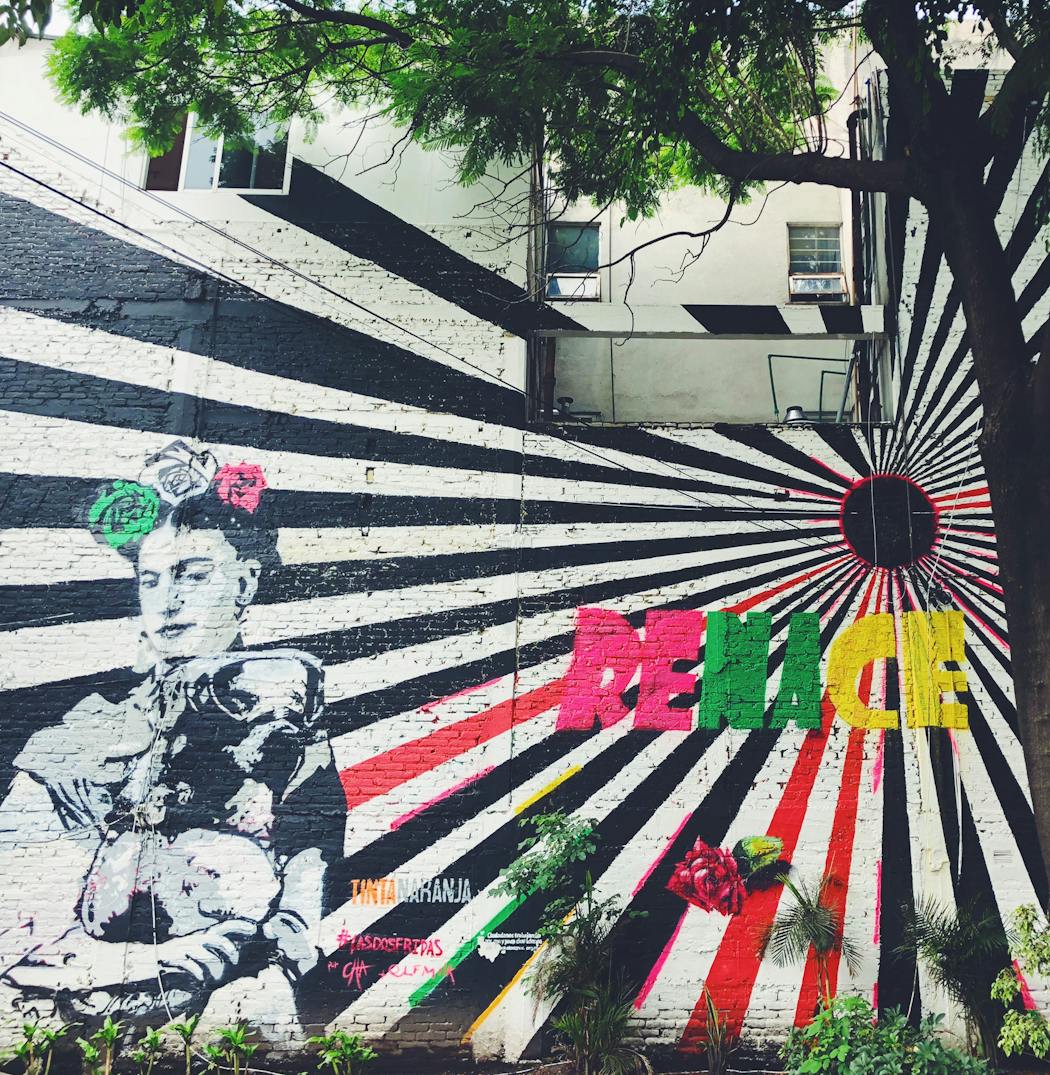The lure of travel beckons all year round, but especially as the leaves turn and the snow arrives, making us want to revel in beauty — and then perhaps escape to someplace warm. Plan your getaways — near or far, cool or hot — from an easy drive to Des Moines to a plane-auto-ferry trip to North Carolina's beautiful Ocracoke Island.
Sioux Falls
Like a blind date gone unexpectedly well, Sioux Falls is capable of surprising travelers who are unaware of its quiet charisma.
First, there's the sophisticated shopping options. Eighth Street's Rug & Relic imports hand-woven Turkish rugs and towels. And the vibrant Phillips Avenue offers shops such as the distinguished J.H. & Sons men's store (think of Minneapolis' Martin Patrick 3) and the adorable Child's Play Toys.
The street also plays host to the largest stretch of the town's SculptureWalk, an extensive outdoor exhibit now in its 15th year featuring pieces that change each year. See something you love? You can buy it.
When you're tired of walking, grab a drink at the nearby Paramount Studio Cocktails & Food, or dinner at its sister steakhouse, Minervas.
Then, there's the natural beauty — the 123-acre Falls Park, lionized since American Indians discovered the area centuries ago, highlights the meandering plunges of the Big Sioux River and makes for an astounding stroll. Around the holidays, the park becomes a winter wonderland, bestrewed with twinkling lights. And in the warmer months (May through October), the falls set the stage for a Saturday farmers market yielding produce, crafts and baked goods.
Where to stay: The Victorian bed-and-breakfast. There's old charm, a complimentary breakfast, guest laundry and an ornate wraparound porch in this 1800s-era home.
Notable: If the kids are coming, don't miss Wild Water West water park, with bumper boats, Go-Karts and a wave pool.
Madison, Wis.
Yes, Wisconsin's capital is a college town — but the entertainment doesn't end at Camp Randall, the home of Badgers football.
Located on an isthmus between two lakes, Madison offers travelers hiking, biking and water sports, as well as art museums, shops and lauded restaurants in its walkable downtown core.
It's best to start on the lakes, a mantra Minnesotans know well. If you arrive between Memorial Day and Labor Day, rent kayaks or stand-up paddleboards from Brittingham Boats on Monona Bay. Looking to bike? Use Madison's BCycle system (with bikes and bike docks scattered across the city) for a daily fee, or rent a road or hybrid bike from Motorless Motion (MoMo) Bicycles. If your path sends you around Monona, consider a stop at Olbrich Botanical Gardens, a picturesque stroll through several themed areas, including English and Thai-style gardens. Plan to stop at Underground Butcher for sandwiches or Wisconsin-made cheese and charcuterie for a picnic.
When you're ready to relax, head to Memorial Union Terrace for a cold pint and one of the best views of Lake Mendota.
In town, State Street and the surrounding area's plethora of shops and restaurants make for a full afternoon: Gotham Bagels for breakfast, the Madison Museum of Contemporary Art for afternoon recreation, and perhaps Spanish tapas haven Estrellon for dinner.
Of course, a football game is a good idea — if only to root against one of the Minnesota Gophers' top rivals. If the Badgers aren't in town, consider a tour of the facilities instead.
Where to stay: The Edgewater. Take advantage of both Lake Mendota's sight lines and bustling downtown with this waterfront hotel (it boasts its own pier) just down the street from Capitol Square.
Notable: If you travel over Halloween weekend, be aware of the daylong Freakfest Music Festival, featuring regional and national acts on three stages.
Des Moines
A couple decades ago, it's unlikely that Des Moines would have appeared in any travel guide. But in the past 15 years, the city has carefully crafted its own transformation — from flyover country to a growing hub of culture and entertainment.
Music venues, a thriving artist scene and a bridge-laden footprint that straddles the Des Moines and Raccoon rivers provide enough recreation to fill a weekend and more. A trip to Iowa's capital must include a rendezvous with the Des Moines Social Club, a renovated, art deco former firehouse that now serves as a venue for all sorts of innovative arts and entertainment. Check the calendar ahead of time: any given night might feature a live performance, an art exhibit, a film screening, beer yoga or a class teaching ballet or acrobatic tumbling. Another must-do — a jaunt along the river trail, offering unparalleled views of the city, particularly at sunset.
But first, start the day downtown, with a cup o' joe and window shopping at the West End Architectural Salvage and coffee shop before crossing the Court Avenue bridge and heading for the historic East Village neighborhood, a pedestrian-friendly segment of town filled with boutique stores. Take a tour of the elaborate, gold-capped State Capitol building, the nation's only five-domed capitol — and if visiting in the winter, know that sledding is prime here. Shop for homemade gifts at Domestica, which stocks wares from various independent artists.
Perhaps dinner is back downtown, at beloved modern Italian trattoria Centro, for red wine and craft pizza — or tiki drinks and a wildly different kind of pie at Fong's Pizza, a dive known for its Polynesian cocktails and crab rangoon pizza. And for evening entertainment? Hit a Social Club event, opt for live jazz or a cabaret show at the nearby Noce club, or discover local musicians at the cozy Vaudeville Mews.
Where to stay: Renaissance Des Moines Savery Hotel. Centrally located and freshly renovated, this Marriott brand is part of a building on the National Register of Historic Places.
Notable: In winter, use downtown's climate-controlled "skywalk" system.
Boston
Considering the wealth of history, culture, food and entertainment that Boston boasts, it's easy to think of Massachusetts' capital as a big city. But Boston's core neighborhoods, sandwiched between the Boston Harbor and the Charles River, are actually quite walkable.
Start downtown at the Boston Commons, a prime spot for a picnic, and also the head of the Freedom Trail, a 2.5-mile route (you can follow on your own or with a tour) that weaves through 16 historical landmarks. The path winds around Faneuil Hall Marketplace — an indoor food hall/market and touristic hot spot — but for a more local experience, veer slightly off course and wander through Haymarket, a series of open-air vendor stalls along Blackstone Street that sport seasonal produce, flowers, meat and fish every Friday and Saturday, all year long.
Across the park from Haymarket lies the North End, Boston's "Little Italy," where visitors are likely to hear Italian spoken in cafes and trattorias. Between window shopping for handmade pastas, stop by Neptune Oyster for a few briny bivalves — if you're lucky, you'll catch the fishermen hauling them in — or pop into Modern Pastry for a freshly piped cannoli.
The Freedom Trail finishes in Charlestown, but there are plenty of other draws within walking distance. Take in Boston's architectural charm with a stroll through Beacon Hill or sweeping city views at the Skywalk Observatory at the top of Prudential Center. Sail in the harbor or kayak in the Charles. Or shop top brands and dine on chic patios on Newbury Street.
Where to stay: Try to get a room at the Seaport District's Envoy Hotel, the hippest hideout of the moment because of its stylish rooms and posh Lookout Rooftop, which offers some of the best views in the city.
Notable: JetBlue now flies direct from the Twin Cities, making prices competitive.
Ocracoke Island, N.C.
This isn't your average beach vacation. First, there's the journey. After landing at the Raleigh-Durham Airport, a four-hour drive and a two-hour ferry is required to access this Outer Banks outpost.
But be grateful for the inconvenience: it's kept the 4-square-mile village free of big crowds and commercialization. Once you're settled, expect a seaside paradise: Immaculate, untouched beaches; miles of canals and marshes to kayak, and ultra-fresh seafood.
In the early 1700s, the pirate Blackbeard adopted Ocracoke as a favorite haunt because of its distant locale. He died off shore, losing his head after battling with the Royal Navy, and is rumored to have buried his treasure nearby — a story that can be further explored at Teach's Hole, an educational exhibit. The island was later settled by early Jamestown-era transplants hoping to get away. Because of its isolation, Ocracoke developed its own distinct culture, including a dialect called "brogue," which blends a deep southern accent with old English/Irish inflections. Brogue is dying, but you can still hear it on the docks in midafternoon, when the fishermen bring in the daily catch.
Enjoy their bounty at the excellent Ocracoke Seafood Company market if you've rented a house with a kitchen, at one of the many quaint restaurants or at Eduardo's taco stand, which serves the island's best fish tacos.
Need more entertainment? Rent bikes, hit the beaches (recognized as some of the country's best), or go kayaking or stand-up paddleboarding in the canals or on Silver Lake (rentals are available at Ride the Wind surf and kayak shop).
Where to stay: Consider renting a home through Ocracoke Island Realty; rates are lowest before June or after August. Bonus: If you rent on the island's series of canals, Ride the Wind will deliver watercraft to your door.
Notable: Hurricanes are unpredictable and can cause serious damage to coastal areas. Be cautious when making plans.
Seattle
Yes, it rains a lot. But thankfully for travelers, many of the other, more delightful stereotypes about the hilly, Pacific Northwest city — that it brims with stellar coffee, pristine seafood, postcard-worthy views and a pulsating music scene — also ring true.
About those vistas — don't believe everything you read. The panoramas visible from the top of the Space Needle aren't the best in town. Instead, snap your Instagrams from a local's perspective of Mount Rainier backdropping the skyline at the top of Kerry Park in Queen Anne's Hill for the cost of an uphill climb.
The sights aren't too shabby from the well-trod Pike Place Market, either. Watch fish being tossed through the air, browse the hundreds of stalls or grab lunch from one of the many eateries that overlook Elliott Bay. Skip the nearby original Starbucks — there will be a line — and try one of the city's best cups at Elm Coffee Roasters in Pioneer Square, Seattle's original heart. Coffee beans aren't the only thing brewed well in the city; in recent years, the microbrewing industry has commanded attention. One option? Elysian Brewing, which specializes in unique beers like its Avatar jasmine IPA.
Music venues, too, are sprinkled across the city where grunge got its start. For a good balance between "theater" and "dive," check out Capitol Hill's Neumos, which plays host to both established national acts and up-and-coming local bands. Preshow dinner could come in the form of southeast Asian small plates at the nearby Ba Bar, or an indulgence in fresh local oysters at Manolin, across Lake Union. Pack your raincoat for these excursions, but know, too, that there are plenty of pleasant, sunny days to be enjoyed into the fall.
Where to stay: The Ace Hotel. One of the hippest brands worldwide, this downtown hotel near Pike Place Market offers loft ceilings, hardwood floors — and comparatively budget prices.
Notable: Looking for something even cheaper? Consider staying on Bainbridge Island, a daily ferry away from the heart of the city. A stellar day trip regardless, Bainbridge is beautiful.
Porto, Portugal
Its sister city, Lisbon, may have gotten more attention in recent years, but now is the time for Porto's star to shine.
Situated with even better proximity to water than Lisbon, Porto wraps around the Rio Douro, and its best beaches lie close to the city center. In recent years, boutique hotels and chic cafes have appeared, making a visit to Portugal's second-largest city a celebration of the very best of old and new.
Inside the historic center — one of Europe's oldest and classified a UNESCO World Heritage Site — admire 18th- and 19th-century architecture while strolling along narrow cobblestone streets. The churches, including the Igreja de São Francisco and the Igreja dos Clérigos, are magnificent sights; climb 200 steps up the tower of the latter for a small fee to take in the spectacular views.
The river is an inescapable part of the Porto experience. Take a jaunt across Ponte de Dom Luis I, one of Porto's collection of imperial bridges and a dual-level mammoth, or take a boat ride along the "river of gold," nicknamed for the golden hue it adopts while reflecting the setting sun, or dine at a riverside restaurant. Two traditional dishes to try: Tripas á moda do Porto — a tripe dish with beans and sausage that inspired Porto native's nickname "tripe-eaters" — and bacalhau (cod).
Of course, you can't forget the wine. Exquisite port, named for the city, has been produced in Porto for centuries. Consider a tour and tasting at the Ferreira cellars, or simply savor a glass or the signature Porto Tonico libation — one part white port and two parts tonic — at the hip Xico Queijo.
Where to stay: Flores Village Hotel & Spa. Porto boasts a host of excellent hotels, but Flores stands out for its location (in the heart of the city), its stunning architecture and its picturesque hidden garden.
Notable: If you want to avoid a crowded beach, consider traveling in October, when air and water temperatures are still pleasant, but tourism is much slower.
Mexico City
If you're smart, you'll set aside ample time to explore Mexico's capital, the largest metropolitan area in the Western hemisphere. With streets embellished by colorful art, lush vegetation, a labyrinth of taco carts and a vibe that oscillates, gracefully, between grand and grunge, prepare to be captivated — and possibly overwhelmed.
Just more than a year after an earthquake pounded the city, few hints of the devastation remain. To truly revel in the city's history, head to Zócalo, the square at Mexico City's core which once represented the ceremonial center of the Aztec city of Tenochtitlan. Its sheer size (620,000 square feet) and the colonial architecture surrounding it are a marvel.
But CDMX, as the city is abbreviated locally, is also home to more traditional museums (150-plus) than most cities in the world. Bonus: many of them, such as the Museo Soumaya, are free. And those that aren't — including the excellent Museo Nacional de Antropologia, cost only a small fee. Also, check out Bosque de Chapultepec, a space twice the size of New York's Central Park, and its castle, which you can climb for views of the city.
The city's cultural overload is visible, too, in the plethora of small, independent bookstores, its arenas touting lucha libre (masked wrestling) and its incredible food scene. World-famous chefs have opened outposts like the posh Pujol, named one of the world's 50 best restaurants. Third-wave coffee shops and chic cocktail bars wait around every corner. And the many markets, including the massive La Merced, are great options for a stellar meal, with vendors peddling everything from quesadillas to ceviche.
Where to stay: Hippodrome Hotel. Get away from the crowds of the Distrito Federal (downtown) and relax in La Condesa, one of the city's most charming neighborhoods.
Notable: Unlike many European destinations, tipping is customary and expected in Mexico City. Generally, 10 to 15 percent is typical at restaurants. Cabs and street stalls do not require tips (but they are appreciated).
